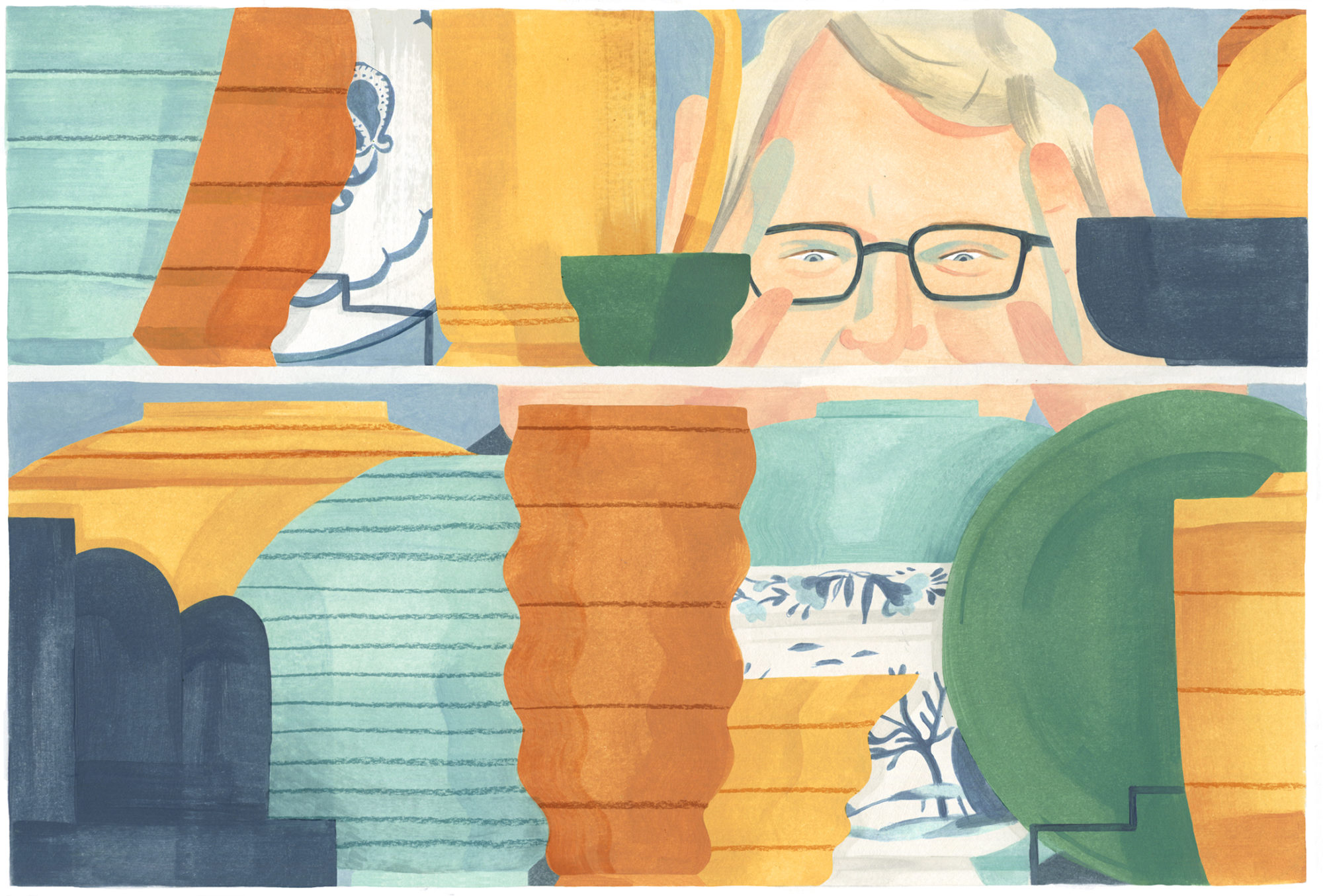When I was growing up, in the 1960s and ’70s, there wasn’t much decorative art around my family’s house—other than a a few of my grandmother’s plates. It’s worth noting, interestingly, that they were my grandmother’s, not my mother’s. Decorative art just wasn’t a part of my early life.
That is, until I was a college student abroad in Florence, when this unexpected turn of events happened. I met the English watercolor painter Virginia Churcher, then in her late sixties. She invited me, this 20-year-old from the suburbs of Portland, Oregon, to visit her country house in Shaftesbury, England. I stayed with her for three days. She had servants. We were served on “proper” tableware and silver. It just totally blew my mind. The ritual of having specific plates for specific food, the time it took, the whole ceremony of the meal—it was so incredible and unexpected. Nowadays you only get this experience in fine-dining restaurants.
Decades later, in 2002, when I won the project to design New York’s Museum of Arts and Design—which was the former American Craft Museum—I began to think about decorative arts further. Then, around six years ago, I went to the sixth-floor ceramics galleries at London’s Victoria and Albert Museum. It was a life-altering experience. The collection, which starts in 2500 BC and goes all the way to the present, offers such unbelievable breadth. Best of all, there’s practically no one there, because, well, ceramics and decorative arts are not really in fashion, I guess. Pretty much the only people in the galleries during my visits have been the crazy obsessives like me and a bunch of old English ladies into Wedgwood. For me, it’s the works from the 1960s and ’70s in these galleries that stand out in particular. The studio potters from England at that time were so innovative, using every glaze imaginable.
One of the pieces on display there, this ochre-colored, unglazed, bisque-fired Deruta stoneware plate, provided inspiration for the tableware collection I just designed for the soon-to-reopen Eleven Madison Park. Last fall, before I started designing the restaurant’s new plates, I went back to the galleries again and spent two days there obsessing over everything. Any lover of objects has to see this place. It showcases the entire history of intentional tableware, starting with salt-fired pots. Practically every visual expression and revolution in glazing and firing is on display.
While in the galleries, I became fascinated with the work of Keith Murray, a relatively unknown figure who was trained as an architect and designed all sorts of ceramics for Wedgwood. Throughout the 1920s, Murray struggled to find architecture work, and in the early ’30s he began designing pieces for Wedgwood, which was doing some really progressive stuff during this period. (In the late 1930s, Murray would also design, with Charles White, the company’s Barlaston factory.) Murray’s Wedgwood plates and bowls and decorative items, many of them on display at the V&A, are gorgeous. Why I appreciate Murray so much is because he did these really elegant forms and combined them with gorgeous, mid-tone glazes. And then he incised them with horizontal rings on the surface and after that added a white glaze. For the bowls and cups I did for Eleven Madison Park, I put scallop shapes along the rims. That idea of ornamentation came from his work.
It was just this past spring, after already having hired me the previous fall to design the Eleven Madison Park space, that owners Daniel Humm and Will Guidara asked me to also do the tableware, which had to be ready for the reopening this fall—I had very little time. My learning curve was swift. Luckily, my obsession with ceramics and the V&A’s collection had existed for a while. I was already conceptually up and running.
The author is the founding principal of the firm Allied Works Architecture, with offices in New York City and Portland, Oregon.
